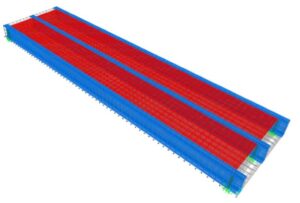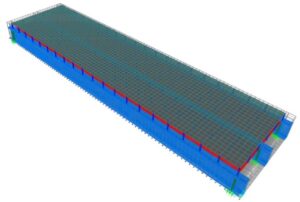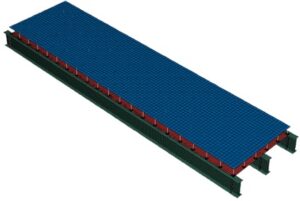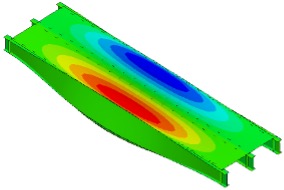FastFloor Commercial is an all-steel floor module consisting of three W-section beams with a floor plate on the top connected intermittently using welds and bolts. Sahabeddin Rifai (West Virginia University) and Rajshri Chidambaram Muthu Kumar (Johns Hopkins University) have been actively developing finite element models of FastFloor prototypes using commercial finite element software like SAP (Fig. 1 & 2) and ABAQUS (Fig. 3). Various prototypes of the FastFloor considered in the analysis include – the “bare” steel floor module, modules with structural remediations (plate stiffeners, angle blocking, etc.), and modules with and without a Raised Access Floor (RAF).



Vibration analysis is performed on the models to find out the eigen-frequencies, the corresponding mode shapes and the expected accelerations. Fig. 4 shows the first mode shape of the bare floor module as predicted from the ABAQUS model of a specific module. (SAP results are similar).

Using results from modal testing on lab specimens, the researchers updated various model parameters, such as boundary conditions and connections between members, to align the analytical dynamic characteristics with the experimental data. These updated models enable the prediction of vibrations in larger-scale floor specimens that are impractical to test in the lab. As a result, well-calibrated smaller FastFloor models offer a valuable tool for gaining insights into the real-world behavior of floor systems in service. Work is ongoing to finalize the fast floor module.